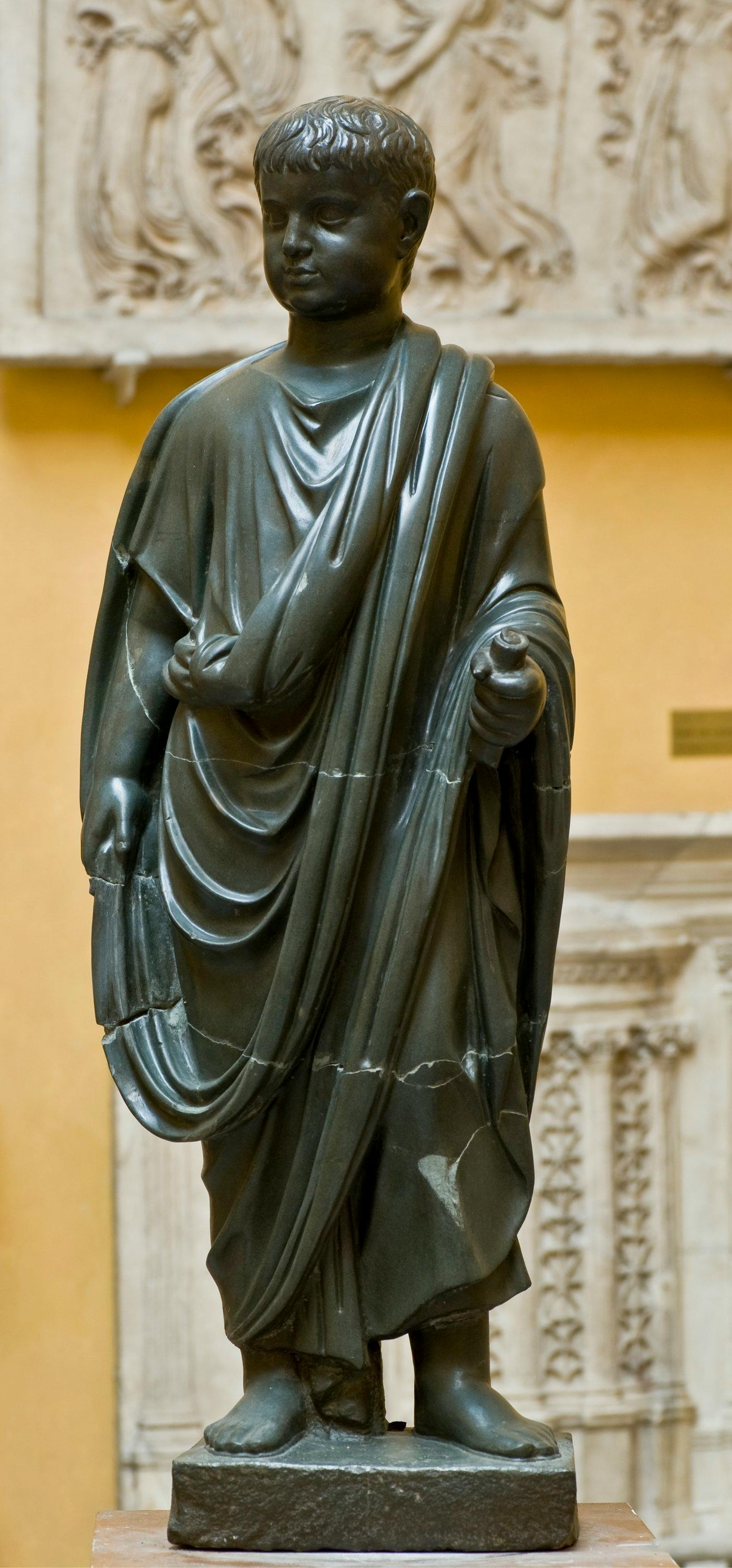Youth in toga
Roman art
This sculpture was found on the Celio Hill, in Rome, in 1651. The missing head was replaced by Leonard Agostini, from a model of the portrait of Britannicus, son of Emperor Claudius (41-54 A.D.) It was common practice in the period to restore a recognisable shape and to complete sculptures that had been found in parts. While filling gaps or restoring surviving parts, restorers used models that could be seen as close to the mutilated works. Sometimes these pairings were correct, although misunderstandings and incorrect interpretations were also frequent. Historians and archaeologists now have the delicate task of distinguishing the original parts from the integrations. This youth was the subject of large-scale restoration to his head, his left hand and roll, and perhaps a part of his right arm. The sculpture shows a young man in the ceremonial dress usually worn by adult men. This unusual “fashion” was introduced in the Augustinian period and it is possible to note young “toga-ed” men in the reliefs on the Ara Pacis. The toga worn by the youth is in fact similar to the models dating bac k to the mid 1st century A.D.
A recent hypothesis seems to confirm Leonardo Agostini’s theory. The Youth in a Toga would appear to be Britannicus, son of Claudius and Messalina.
The sculpture was initially displayed in the Sala delle Iscrizioni but was moved to the Tribune in the mid-18th century. There are scholars who consider this piece to be part of a group including a statue of Agrippina the Younger, fourth wife of Claudius and adoptive mother of Britannicus, now in the Capitoline Museums.
E. Talamo in I giorni di Roma, I ritratti. Le tante facce del potere, Catalogo della mostra (Roma, Musei Capitolini, 10 marzo – 23 ottobre 2011) a cura di Eugenio La Rocca, Claudio Parisi Presicce con Annalisa Lo Monaco, Roma 2011, p. 232, n. 3.8
